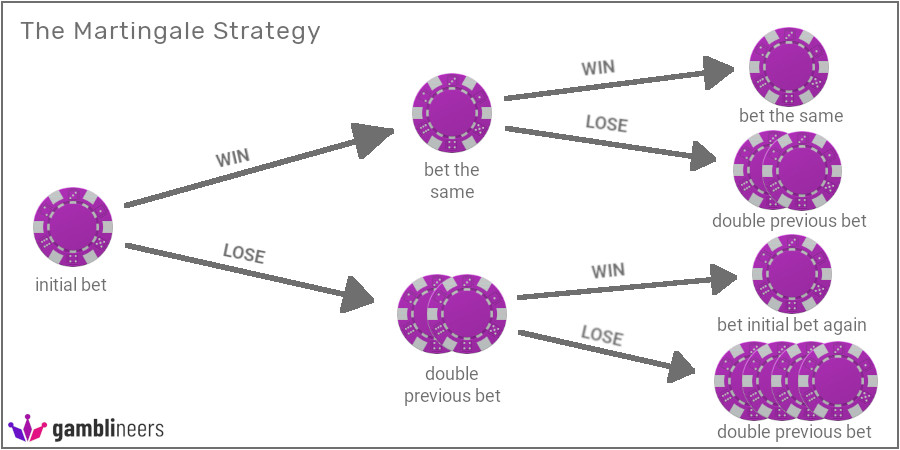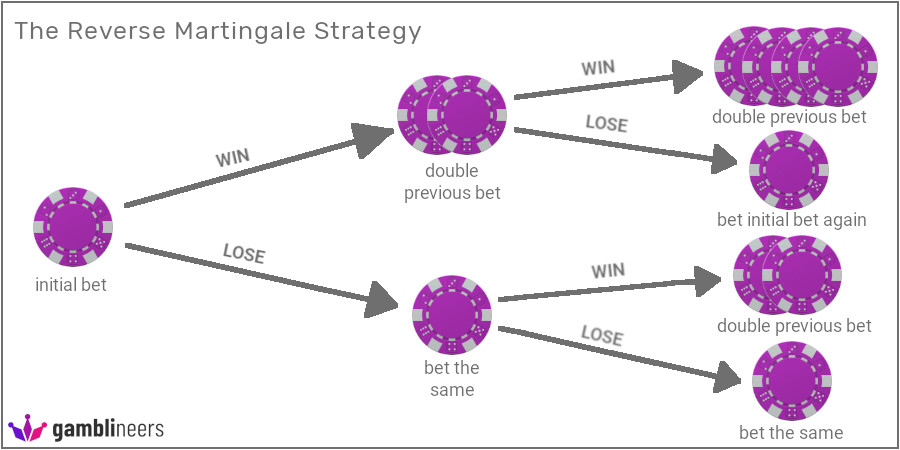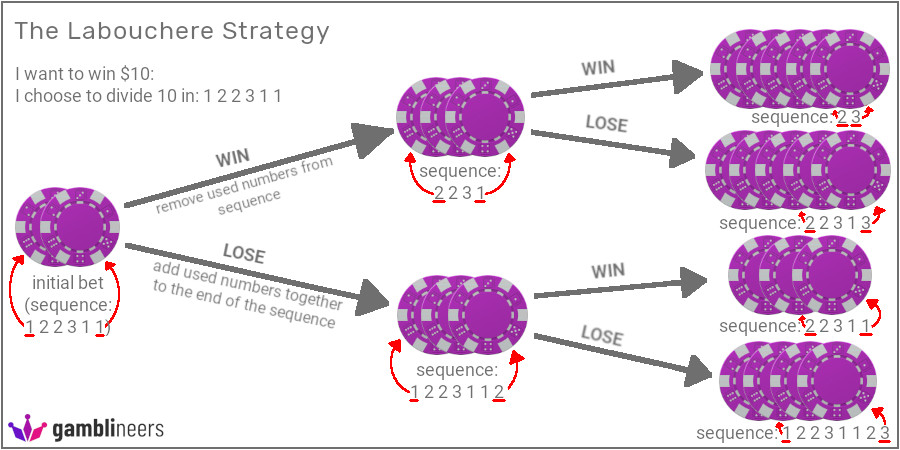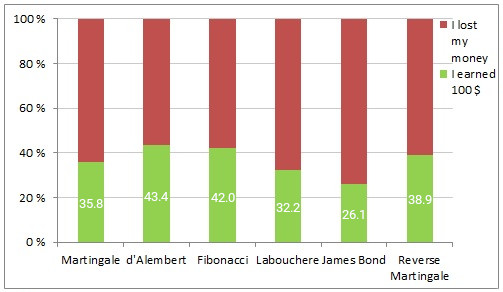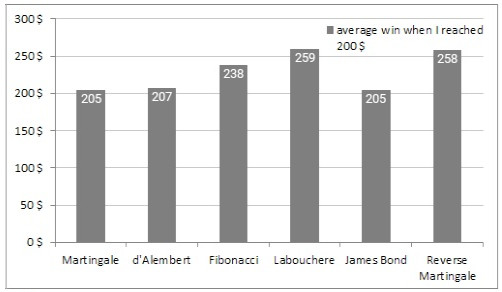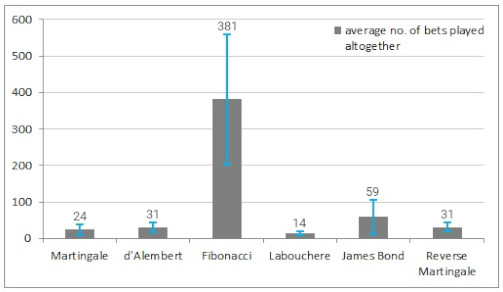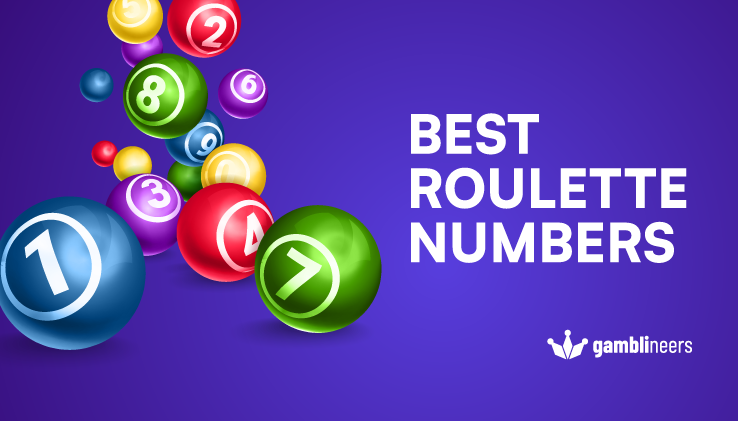Best Roulette Strategies Tested a Million Times
Adam Gros / Sep 05, 2022
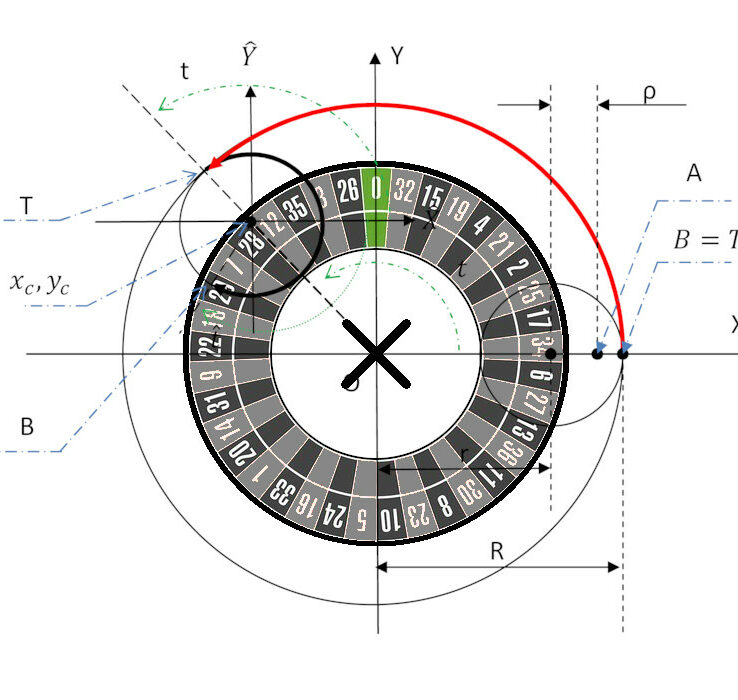

Why Did I Decide To Do This?
I have been playing Bitcoin roulette at different Bitcoin casinos, and just like me I assume you too have come across articles that mention some theory or another, telling you in conclusion that none of these theories can actually help you win.
While that is true, it’s not exactly true … These strategies cannot guarantee that in the end you will walk away with more money than you had in the beginning – but they can still help you double your money. Which one can help you the most?
Going into this, I knew that playing games using each strategy cannot guarantee that I will double my money. But I still wanted to know which strategy has the best odds at helping me do that if I stick to it no matter what and use it every time I play roulette.
Before I dive into my million tests and show you why the Reverse Martingale strategy is the best roulette strategy, let’s briefly look into each strategy that was tested and how it differs from the other ones.
I tested 6 best roulette strategies:
- the Martingale roulette strategy,
- the Reverse Martingale roulette strategy,
- the d’Alembert roulette strategy,
- the Fibonacci roulette strategy,
- the James Bond roulette strategy,
- the Labouchere roulette strategy.
I guess someone might have done this same test at some point in the long history of roulette (which is around 300 years, to quote my friend, Wikipedia), but personally, I have not found anything similar anywhere online. This is why I decided to do the test myself and share the results with all of you.
Here is a quick summary of what I discovered:
- The James Bond roulette strategy did the worst; it helped me win only 26 % of the time.
- Strategies which doubled my money the fastest are the Labouchere and the Reverse Martingale strategies. They helped me do that on average with 18 – 19 bets.
- The strategy which kept me on edge the longest by taking a very long time to double my money is the Fibonacci strategy. It had me waiting on average for 216 bets, which also makes it the safest roulette strategy to use.
- As I already mentioned, the best, most reliable strategy which helped me most often is the Reverse Martingale roulette strategy. With it I managed to at least double my money over 43 % of the time.
- The strategy which let me have fun the longest, whether I doubled my money in the end or lost all of it, is the Fibonacci. I played every game on average for 381 bets.
- And the strategy which ended my games the fastest and either helped me double my money or crash-landed me to 0 the fastest is the Labouchere roulette strategy. I played on average for only 14 bets.
Let’s look at the strategies in more detail now.
The Martingale Roulette Strategy
The Martingale roulette strategy is probably the most known and the most popular among all strategies. I belongs to a group called progressive betting strategies.
The Martingale strategy relies on even money bets. This means betting on red/black, even/odd or 1-18/19-36, where the payout is always 1:1.
The strategy is very simple to use: You choose your preferred initial bet and bet with it every time you win, or you double your previous bet every time you lose.
The doubling of your previous bet is to cover your losses and to win some more to put you back in the green numbers.
But this strategy is also very risky to use because things can go wrong very quickly.
Let’s say you start your betting with $2. If you lose, your next bet is $4. If you lose again, it’s $8, then $16, $32, $64, $128 and so on.
Losing a couple times in a row can increase your bets drastically and you therefore risk losing all of your money very early into the game – unless you have very deep pockets, but I guess in that case you already have a better way of doubling your money then the rest of us.
The Reverse Martingale Roulette Strategy
While also a progressive betting strategy, the system here is reversed, just as the name suggests.
The Reverse Martingale strategy, also known as the Paroli system, also relies on even money bets. It reverses, or turns upside down, the Martingale strategy.
You double your bet every time you win, or you restart with your initial bet if you lose.
The idea here is that you do not increase your risk by betting more if you are on a losing streak. But since you are doubling your bets when you win, you basically keep betting everything you have won until you stop and go home, or lose it all again.
For example, you walk into a casino with $2 (that would be some confidence), you bet and win. Now you have $4. You double your bet, which is now $4, and you win again. You now have $8, you double your bet again to $8, and so on.
As long as you are winning, you bet everything each time – but if you lose, you lose everything as well.
Both the Martingale and the reverse Martingale strategies have steep progressions because you are doubling your bets. Steep progressions carry the most risk because things change very fast due to the quickly increasing bets – but such strategies can also win you a lot of money in case you do land on a winning streak.
The d'Alembert Roulette Strategy
This strategy is named after the mathematician Jean le Rond d’Alembert, who created this betting system in the 18th century.
It is quite similar to the Martingale strategy, also relying on even money bets, but it is slightly less risky due to its less aggressive progressions.
The d’Alembert strategy requires you to set your initial bet and the amount to increase or decrease your bets with.
Instead of doubling your bets when you lose, you will be adding a certain amount to your previous bet each time, or you will be decreasing your bet by the same amount if you win.
So for example, if you start betting with $2 and lose, you add $1 (or another amount that you are comfortable with) and then bet $3. If you lose again, you increase by $1 again and bet $4; and if you win, you decrease the bet by $1. But you never go below your initial bet.
Experts recommend setting your increase/decrease amount to 0.33 % or 0.5 % of your total funds, so if you lose a few times in a row, your bets don not sky-rocket.
Allowing you to set the increase/decrease amount as you prefer allows you to determine the risk you are willing to take. Higher number = higher risk, lower number = lower risk, since this number determines the aggressiveness of your progressions.
The Fibonacci Roulette Strategy
This strategy is also named after a mathematician, Leonardo Fibonacci, who designed a sequence in the 12th century. It goes like this:
Every number, except the first two, is a sum of the previous two numbers.
Like the d’Alembert strategy, the Fibonacci strategy also uses the principle of increasing and decreasing your bet if you win / lose, making even money bets. The only difference is that Fibonacci doesn’t let you choose your own increase/decrease amount, but it follows the Fibonacci sequence instead.
You start your betting at the beginning of the sequence and move one up if you lose, or move two down if you win.
For example, you bet $1 and you lose: You move one number up in the sequence, which is 1 again. You bet $1 again and lose: You move one up again, which is now 2. You bet $2. If you lose again, you move up to 3, and if you win you move two down to the first 1 in the sequence. Needless to say, you cannot move further down from the first number 1 in the sequence.
If calculating the sequence in your head as you play is effortless to you or if you write it down somewhere, the Fibonacci strategy is very easy to use. It also eliminates the risk of poorly choosing your bet values if you do not know exactly what you are doing when using the d’Alembert strategy.
Otherwise, just like the d’Alembert strategy the Fibonacci roulette strategy is a flat (as opposed to steep) progressive betting system.
The James Bond Roulette Strategy
Before you jump to any conclusions about this strategy having something to do with the number 7, let me tell you, it does not.
In the book ‘Casino Royale’ Mr. ‘license to kill’ James Bond takes a shot at roulette, where he plays by following his own system.
Unlike all strategies up to this one, the James Bond roulette strategy is not a progressive one. This means that you will not be increasing your bets; and unlike all strategies I have listed before this one, the James Bond roulette strategy does not place bets only on even money bets.
Here is how it goes:
For every spin the following bets are placed: $14 on 19 – 36, $5 on the six-line bet (13, 14, 15, 16, 17, 18) and $1 on 0. This is $20 altogether. If you wanted, you could increase your bets here so that they sum up to $200 or $2,000 or so on – but they must be in the same ratio!
This way, for every spin you bet on all numbers except 1-12. This increases your odds of winning, since you are betting on the majority of numbers, but you can also lose more.
These are the possible outcomes:
- if the ball lands on 0 (payout 35:1), you win $35 and end up with a $15 profit,
- if the ball lands on 1-12, you lose $20,
- if the ball lands on 13-18 (payout 5:1), you win $25 and end up with a $5 profit,
- if the ball lands on 19-36 (payout 1:1), you win $28 and end up with an $8 profit.
It seems like James Bond beat the odds right?
Unfortunately, no.
The problem here is that although you will win most of the time, you will win much less than you will lose the rest 33 % of the time.
Since the odds are the same no matter where the ball lands, you should get a feeling where Mr. James Bond would take us if we were to spin the wheel 37 times and a different number fell each time.
Let’s calculate our winnings: $15 for 0, 6 times $5 for numbers 13-18, 18 times $8 for numbers 19-36, and 12 times -$20 for numbers 1-12.
$15 + 6*$5 + 18*$8 – 12*$20 = -$51
This means that you will have $51 less on average every 37 rounds.
The Labouchere Roulette Strategy
This last strategy is the most complex one to explain and to follow.
Named after a 19th century aristocrat Henry Labouchere, it also utilizes even money bets.
First, you must decide how much money you want to win. Let’s go with $10 for this example.
Then you split this amount into a sequence of smaller numbers which add up to your winning amount. In this case let’s make it 1, 2, 2, 3, 1, 1. It can be anything really; any length and any numbers you want, as long as they add up to your desired winning amount.
When making a bet you always take the first and last number in the sequence, add them together, and bet that value. In this case, the first bet is 1 + 1 = 2 $.
If you win, remove the numbers you bet on from the sequence. That would result in 2, 2, 3, 1, and the next bet would be 2 + 1 = $3.
If you lose, add the value you just bet to the end of the sequence. That would result in 1, 2, 2, 3, 1, 1, 2. This way you have to bet what you just lost and a bit more to compensate for your losses.
Continue until you run out of your sequence or run out of money.
The Labouchere roulette strategy is also a progressive betting system because it increases your bets when you lose.
Results of Playing Each Strategy a Million Times
Now that you know the main differences between the six tested roulette strategies, let’s look at what stands out if you choose each of the strategies and use it as your loyal betting system.
Before I dive in, here is how I played: I always started with $100 in my pocket. My initial bet was always $5 (except for the Fibonacci strategy, where all bets were predefined). My goal was to try doubling my money, so I always walked away when I reached $200 or continued to play until I lost all my money or until the bet got higher than what I had left.
I wanted to know how many times I would be able to walk away with $200 if I used each roulette strategy a million times, which strategy will help me achieve my goal with the least and the most bets, which strategy was the most fun, and which one was the worst.
I have to admit, I was surprised by some of the results I got. Here they are:
% of games where I doubled my money vs. % of games where I lost it:
Average final sum of my money when walking away after doubling it:
Average number of bets needed to double or lose my money:
Average number of bets in a million games:
How Much Did I Walk Away With
The bars depicted on the top right chart show how much money I had at the end of all the games I won, averaged out. This means that when I reached $200, I walked away (but it was rarely exactly $200). So how much did I win exactly? As you can see, it was always more then $200, with some strategies only slightly more and with the other ones significantly more.
This is expected because your bet amounts vary from spin to spin with every strategy except with the James Bond strategy. It would be a big coincidence to end up with exactly $200 at the end of a win.
What is even more interesting is the fact that the Fibonacci, the Labouchere and the Reverse Martingale left me with significantly more on average. I know this is always good news, but can it help you?
Actually, yes.
If you stick to one strategy and always play until you either double your money or lose your money, this means that you either win more than $100 on top of your initial $100 or that you lose the initial $100 (or less).
Why would you lose less? Because if you are strict about your betting system and you end up with, for example, $30 but you need to bet $37 on your next spin according to your strategy, then you cannot do it and you finish the game. This means that you did not lose $100, but only $70.
Let’s stop here for now and just remember this scenario. I will come back to this towards the end of this article.
Did I Double or Lose Money Faster
The bottom left chart shows the average number of bets I had to make with each strategy to either double my money (green bars) or to lose my money (red bars).
What does this tell me?
4 out of 6 strategies took more bets to double my money than to lose it, which means I cannot rely on doubling my money until it actually happens. Or I lose it all along the way.
But the Fibonacci and the Reverse Martingale strategies show an inverted trend: It took more bets on average to lose than to double my money. This means that I have the ability to predict whether the game I am playing is moving in the direction of me losing money or not.
If we take the Fibonacci strategy for example, I could add another rule to my betting system: If I do not succeed in doubling my money in 216 rounds, I stop playing no matter how much money I have left. I could play with this number and set it to 220 or 250 or 300 instead of exactly 216 – it does not matter – it depends on how safely you want to play.
This tremendously decreases your risk of playing. And if I return to ‘loosing less than $100‘ from the previous section, this information helps me lose even less because I do not walk away when I do not have enough money anymore to place the next bet. I walk away sooner, according to my statistic of playing a million roulette games with this strategy.
The same scenario applies to the Reverse Martingale strategy but the ‘walk away’ window is smaller because the overall number of bets is smaller.
Should I Go for The Money or Run
As long as I have known roulette and different players, I have also known that they play roulette for two different reasons:
- To win some extra money or
- to have fun at gambling.
Even though the aim of my million games strategy test was to help you with the first goal, let me comment on the second one.
If you are looking to have fun, I assume that you want to play as long as you can without losing a fortune. This means that you want to make as many bets as possible during a single game without reloading your wallet.
According to the bottom right chart, the Fibonacci strategy is the obvious winner for this by far. It let me play almost 400 bets per game on average, regardless of either losing or doubling my money in the end. This is about 12 times more than any other strategy.
Which Strategy Is The Best?
Of course, I saved the best for last.
As you can see in the first chart where the green areas represent the percentage of all games where I walked away with at least $200 in my pocket, no strategy allowed me to do this 50 % of the time or more. But don’t get discouraged just yet.
This result makes sense and was expected. Roulette strategies cannot help you beat the casino’s house edge, so your odds are always below 50 %.
However, this is the time to remember the scenario from the ‘How much did I walk away with?‘ section: “… you either win MORE than $100 on top of your initial $100 or lose the initial $100 OR LESS.”
Taking this into consideration means that even though I lost more than 50 % of the games with any strategy, I almost always lost less than I won when I managed to at least double my money.
Let’s put this into an example to help us get a better picture: I won 38.9 % of the games with the Reverse Martingale strategy and the average amount I was left with at the end was $258; this is $158 on top of my initial $100. Let’s be pessimistic here and say that I lost every cent when I lost the rest 61.1 % of the games.
After 100 games:
This means that after 100 games I would have $36.20 more than I had in the very beginning. After 1,000 games I would have $362 more, after 100,000 games $36,200 more, etc.
See where I’m going with this?
And I was pessimistic in this scenario by presuming that I actually lost all $100 61.1 % of the time, when in reality I almost always lost less.
But let’s not just stop at this example. Here is another chart showing my wins & losses after each of the 1,000,000 games played with each roulette strategy.
Average number of bets needed to double or lose my money:
As you can see, I managed to make a profit with 3 out of 6 strategies after playing a million games. However, this is not one of those black-and-white scenarios.
To fully understand what was happening we must zoom out ans look at the bigger picture: from the first to the last game. After the first few thousands of games I was on a very promising winning journey with the Martingale strategy, but I started loosing at around 250,000 games and I never recovered again. While on the other hand, I started losing very soon with the Reverse Martingale strategy, but then recovered at around 350,000 games and continued to gain profit.
But in order to get to my final $163,500 of profit with the Reverse Martingale strategy I needed to lose almost $69,000 along the way.
Considering all this data, I must say that the Reverse Martingale strategy nevertheless seems to be the most promising strategy to use. It did not have the highest percentage of games won, but it was close enough and earned me a lot of money, exceeding my set $200. On average it required more of my bets to lose than to win to allow me to play it on the safer side. In the end, it left me with the most profit.
Conclusion
Again, I have to admit that I did not expect the results to turn out this way.
I certainly did not expect the James Bond strategy to be the worst one, but then again that only proves that first appearances can be deceptive. The lesson here is that you should not put your trust into a strategy just because it ‘looks good’.
To conclude, this is my advice to all roulette players in search of a gambling strategy:
- To try and win the most, use the Reverse Martingale strategy, set your winning goals ahead of playing, and stick to your rules and your strategy. Above all, remember that this is a waiting game; results do not come overnight. Know that you are always taking a risk, so be prepared to lose your money before you win it back.
- To play the safest possible strategy, the Fibonacci is the obvious choice. At times it may seem that you are just going around in circles and nothing is happening, but to be honest this is what playing on the safe side looks like: very small steps towards a great goal.
- Don’t just throw away the James Bond strategy. Try it out yourself, just don’t expect much in return (perhaps play a free roulette game first ???? )
There you have it, a million games with 6 most popular roulette strategies. Now it’s your turn to spin the wheel at your Bitcoin casino. Or, like me, you can go and try your luck at one of the best Bitcoin roulette sites.
May the odds be ever in your favor!
